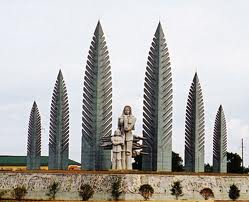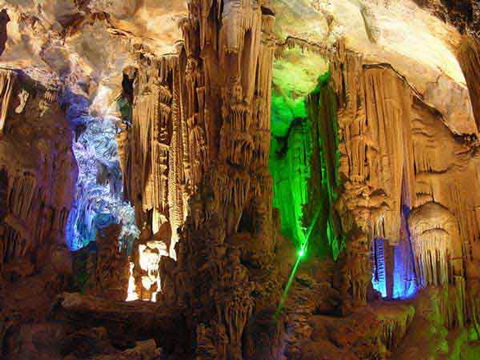Day 1: Da Nang arrival - Hoi An
Pick-up at Da Nang International Airport/ Railway station. Take a short drive to the riverside town of Hoi An. Upon arrival, embark on a walking tour of this ancient trading port. Visit a traditional Chinese Assembly House, a Phuckien Temple, ancient merchants’ houses, the 400-year-old Japanese Covered Bridge.
Day 2: Hoi An – My Son – Hoi An (Breakfast)
In the morning, we travel about 50km from Hoi An to My Son sanctuary. It comprises many Champa temples, in a valley roughly two kilometers wide, surrounded by two mountain ranges. It was the site of religious ceremony of kings of the Champa dynasty, and was also a burial place of Champa royals and national heroes. The My Son temple complex is one of the foremost temple complexes of Hinduism in South East Asia and is the foremost heritage site of this nature in Vietnam. Though the complex has been destroyed over time, we still see many majestic ancient ruins of temples in the area. We also spend time to visit a silk handicraft village along the Thu Bon River on the way back to Hoi An.
Day 3: Tra Que Vegetable Village – Hoi An (Breakfast, Lunch)
Depart at your hotel, you will ride by bicycle to Tra Que vegetable village; experience a day of living and working with the local farmers in this village. A tour of the organic vegetable and herb gardens can include some time working in the field if you like, or merely observing and learning about the system and the fresh ingredients. Upon returning to the house, we were all treated to an herbal foot massage followed by a session of cooking various local dishes such as: Tam Huu Spring Roll, Banh Xeo or the local pancake of the people from the middle region. Biking back to your hotel.
Day 4: Hoi An – Hue (Breakfast, Lunch)..jpg)
Hue is one of the most popular destinations for visitors to Vietnam. Straddling the Perfume River, this mysterious, somber city is a historian's dream come true, with numerous 19th century ruins, royal tombs and an excellent museum. The Imperial City of Hue was the capital of Vietnam during the reign of the Nguyen dynasty, the last dynasty in Vietnam.
8.00 Am, Our guide will come to meet you at hotel and depart to Hue city; on the way stop for seeing Non Nuoc stone village, where the local skillful sculptors create many marble products which are exported to many countries worldwide. We drive across the spectacular Hai Van pass and the scenic fishing village of Lang Co, have lunch at a local restaurant then continuing on our way to Hue. A visit to Hue would be completed by taking in attractions such as the Citadel and the Forbidden Purple City, the Imperial Museum, Thien Mu Pagoda. Drop-off at your hotel in Hue.
Day 5: Hue city – Cycling to Thanh Toan Village (Breakfast, Lunch).
Pick up from hotel in Hue, the former imperial capital of Vietnam. We will visit to the elaborate tombs of emperors Tu Duc & Khai Dinh. This guided tour gives you a deep understanding about King’s philosophy of geomancy and how this affected royal life. Have lunch at local restaurant.
In mid-afternoon leave the center of Hue and its historic buildings for a bicycle ride through the rice plantations and the bucolic Vietnamese countryside to the Thanh Toan Village, located eight kilometers away. The village shelters a covered bridge dating back more than two centuries; offered to the villagers by the wife of a high ranking Mandarin. Continue along the river with its banks dotted with temples. At the edge of the river banks the mothers wash their linen while their children are biking back home from school, many who will be astonished to see Westerners lost in this corner of countryside.
Day 6: Hue – DMZ – Dong Hoi (Breakfast, Lunch).
The DMZ lay at the 17th parallel and was created by an agreement known as the Geneva Agreement. In reality, the DMZ extended 10 km on either side of the Ben Hai River and ran west to east from the Laotian border to the South China Sea. The DMZ was breached by the North Vietnamese Army when they constructed the Ho Chi Minh Trail that allowed for the transport of troops and supplies to the National Liberation Front in the south. The U.S, in an attempt to stop the flow of troops and supplies, built a series of fire bases including Camp Carroll, Fuller, The Rockpile, Con Tien, Vandergrift, Khe Sanh Combat Base, Lang Vei Special Forces Camp…. along Route 9, about six miles south of and parallel to the DMZ. That series of bases became known as the “McNamara Line,” so named for Robert S. McNamara”, then U.S. secretary of defence. Some of the war's fiercest fighting and bloodiest battles occurred along that line. Such areas as Khe Sanh, Con Tien, Hambuger Hill… are forever etched into the minds of the soldiers who fought there and survived.
Pick-up in Hue, head north on Highway One toward Dong Ha, stop at sites along the way, such as Highway of Horror, Quang Tri Citadel, the Ai Tu Airfield. Continue to Dong Ha, the former headquarters of the elements of the U.S Marines, head west on Route 9. The first stop is the Rockpile, a look-out of the U.S Marine Corps, visit Van Kieu ethnic Hil-trible people in the Central of Vietnam. Continue to Khe Sanh village, visit Khe Sanh Combat Base. Lunch in Dong Ha. After lunch, head north to visit the Hien Luong Bridge over the Ben Hai River at the middle of the DMZ (Demilitarized Zone), the river that was the only true physical demarcation between North and South Vietnam. Continue to Vinh Moc tunnels, the refuge of some 400 North Vietnamese inhabitants during the bombing operation “Rolling Thunder “.
Overnight at sai gon quang binh hotel.
Day 7: Dong Hoi – Phong Nha Cave – Hue / Dong Hoi (Breakfast, Lunch)
We take a boat trip to the famed caves at Phong Nha. The park has some beautiful limestone formations, grottoes and caves and forest. The park also contains the largest primeval forest in Vietnam and the biggest limestone mountain range on the planet. The most impressive cave - Phong Nha cave is probably the most beautiful with many fascinating rock formations with imaginative names such as The Lion, Fairy Caves, Royal Court and Buddha. Phong Nha also boasts underground rivers, large caverns and passageways and broad pristine sandbanks. Following our exploration of the caves we return to Dong Hoi for lunch before driving back to Hue / Dong Hoi.
